Getida files FBA claims. Margin Pro tackles profits across your entire supply chain—inventory, shipping, rates, and cost of goods.
Jan 6
Bundling isn’t about discounts. It’s about building irresistible offers that Amazon customers can’t scroll past.

Ever wonder why Costco sells hot dogs and sodas together for $1.50? Or why McDonald’s created the Happy Meal? They’ve mastered the art of bundling—combining complementary products to boost sales and create value.
Amazon sellers can tap into this same strategy. This guide breaks down everything you need to know about creating effective Amazon product bundles that customers actually want.
An Amazon product bundle contains two or more complementary items sold in one listing with its own unique ASIN. Each item in the bundle can be purchased separately, but for convenience purposes, they’ve been gathered into one bundle.
There are millions of products listed on Amazon, and a simple search of one item can generate thousands of results. By offering product bundles, Amazon makes it easy for shoppers to purchase everything they need with one click.
Bundles are also often priced at a discount to encourage conversions.
For example, Frito-Lay offers a 50-pack bundle featuring its best-selling classic snacks. It’s a great way to sell items in bulk and ensure customers get something for everyone.
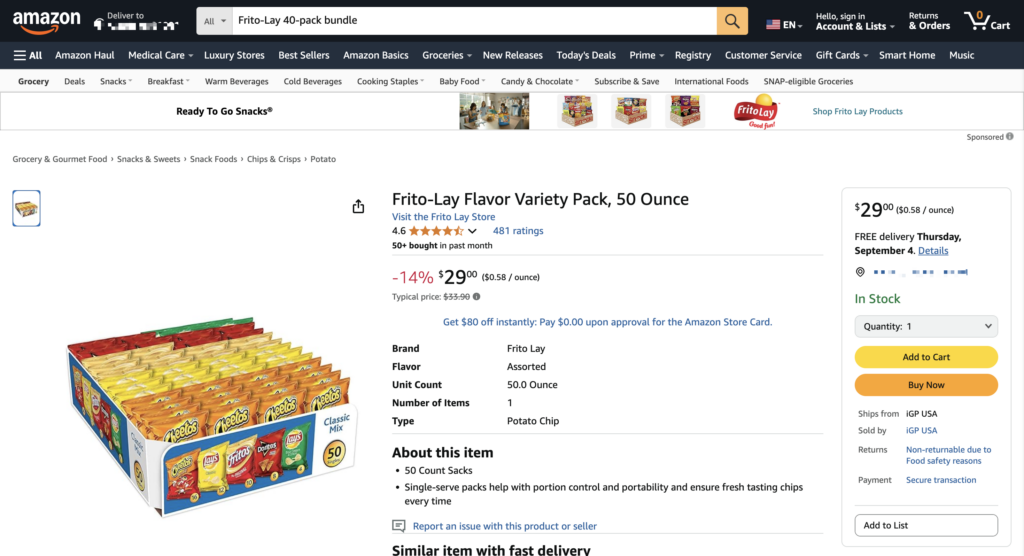
It also pushes customers to spend more as they believe they’re getting a huge discount buying in bulk versus purchasing each item separately.
At first glance, bundles, multipacks, and kits look alike. After all, they’re composed of several items purchased as a whole. But these three are different.
Multipacks are multiple units of the same item in one package. Consumers buy them for the convenience and cost savings of purchasing in bulk. Meanwhile, bundles are different items in one package.
For example, this listing for Funyuns Onion Flavored Rings is a multipack because you can buy 40 pieces of the same item. It’s different from the Frito-Lay bundle above, which contained several different snacks.
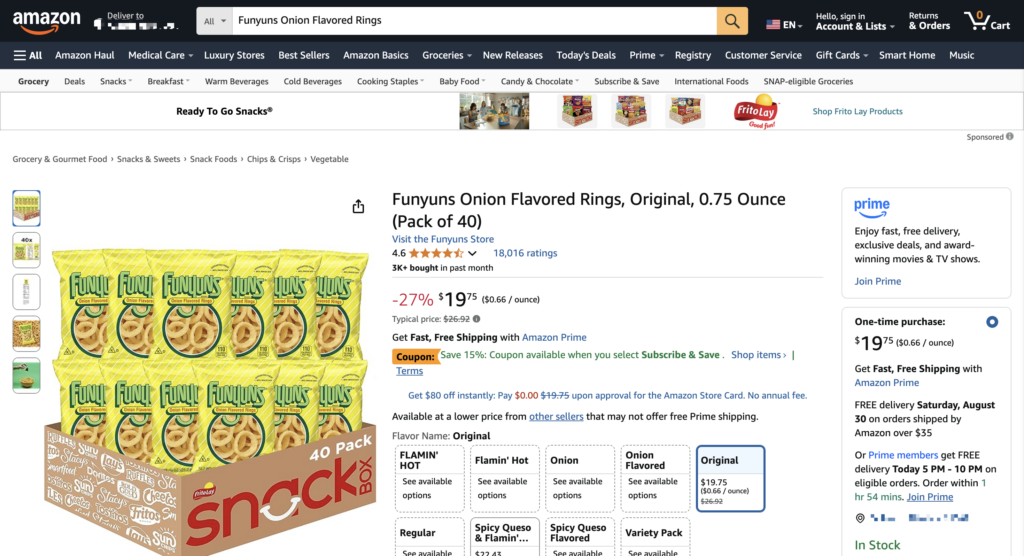
Kits are multiple complementary items packed as a single offer. The items in the kit can’t be purchased individually. With bundles, you can look for the product listing of each item in the bundle and purchase them separately. For example, this Boba Tea Making Kit is composed of different milk tea items that you can’t purchase individually.
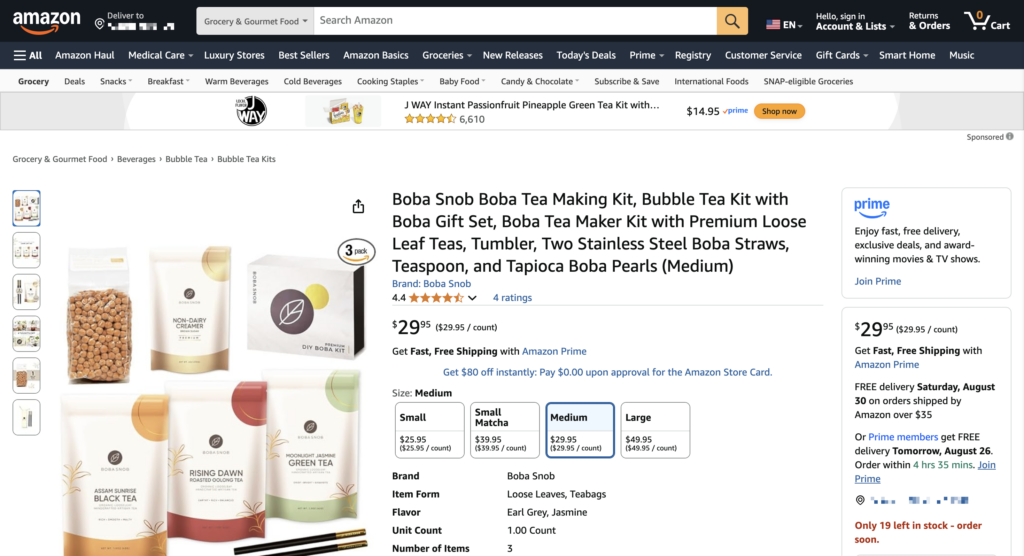
Product bundling isn’t a fad. It’s a simple and smart sales strategy that has worked for centuries. Here’s why you should create Amazon product bundles:
By offering bundles, you’re encouraging customers to spend more in your store. This increases their average order value. In the Frito-Lay bundle example above, instead of selling $2 or $3 snacks, the company can immediately sell $30 bundles, which leads to higher sales.
With bundling, you leverage the power of cross-selling and upselling. You encourage customers to spend more by exploring additional products that they wouldn’t discover if they bought them individually. It’s a win-win situation because you get increased sales while customers enjoy convenience and value-added offers.
Bundling can help you reduce costs like Amazon fees, leading to higher profits.
Let’s look at just one example. While referral fees are essentially unaffected by bundling, shipping, and FBA fees can be dramatically affected. For example, FBA fulfillment costs for a 2 oz. small standard package are $3.06 as of writing. For a 16 oz. small standard package, they’re $3.65.
That means you could feasibly sell eight 2 oz. items in a bundle instead of selling them in one 2 oz. package at a time, paying only $0.46 per item shipped rather than $3.06. That adds an incredible $2.60 in margins per item, leaving plenty of room for you to increase your profits or compete on price.
Meanwhile, customers perceive a higher value for the bundled items, so they’re willing to pay a premium for them.
This is especially true if you create personalized packs like the brand Cravebox, an Amazon store that curates various snacks depending on the season and the occasion.
Just keep in mind that bundles are subject to Amazon’s fair pricing policy, and you’ll be playing with fire if the bundle costs more than the individual items sold separately. However, packs like Cravebox’s show that you don’t have to offer significant savings to make the bundle appealing.
Winning the Buy Box isn’t always a guarantee, especially if you’re selling a highly popular and competitive item. But when you create a product bundle with that item, then you have a unique product offering with few to zero competitors.
You also eliminate the pricing war where you’re constantly fighting for the cheapest price just to be seen by customers. Without a price war, you can command your own pricing strategy based on convenience and overall value.
If your bundles are hard to source and replicate, then fewer sellers will offer the same bundles, which strengthens your market position.
An example is Bodum, a company that sells coffee makers and accessories. By bundling a coffee grinder with a French press, they’ve created a convenient bundle that sets them apart from other similar stores.
By bundling products, you’re creating more offers without actually adding new products. Every time you mix and match existing items, you’re giving customers more and better choices. Those who need certain combinations can choose from your existing bundles instead of looking for complementary products elsewhere.
For example, nCamp offers a convenient five-piece camping bundle that combines its best-selling essentials in one listing. Campers who are looking for a camping stove can enjoy extras like a coffee maker and a bamboo cutting board that they’d also need.
When you create a product bundle, you create a new listing where you can control all aspects. You choose the most flattering photos, write the best titles and product descriptions, and optimize everything so customers see it.
By controlling the listing, you can draw more people to it, which leads to more sales.
Amazon’s quantity limits control how much inventory space your goods can occupy in the FBA warehouse. When products aren’t moving, you’re wasting precious storage space and risk incurring storage fees.
By bundling slow-moving items with fast-moving ones, you can quickly free up inventory space and lower inventory costs. You can also prevent the risk of throwing away dead stock. However, be careful of bundling unappealing dead stock with best sellers because they can have an adverse effect of reducing the appeal of the good item.
While there are benefits, there are also drawbacks to creating product bundles. Knowing these disadvantages will help you create measures to overcome or avoid them.
When creating bundles, you have to think of custom packaging to bring everything together. You also have to buy a UPC for each bundle and find complementary items that make the bundle appealing.
If you’re considering buying wholesale items and then reselling them as bundles, you’d have to create multiple wholesale accounts with different brands. You also need to secure licenses, as needed, and resale certificates.
Since a product bundle is a new listing, it doesn’t inherit the attributes of the individual products. That means your bundle listing needs to gather its own product reviews and ratings. You can’t leverage the reviews of a popular listing.
You also need to create your own product titles and descriptions and make sure they’re optimized for search engines. If you decide to change a bundle’s component, you must delete the entire bundle and start from scratch.
Just because you’ve created a great and value-laden bundle doesn’t mean your customers see it that way. There’s a huge risk that they won’t like the bundle and will prefer to order individual items instead.
If you’re storing pre-packaged bundles and they’re not moving as fast as individual items, you can get into a tricky inventory situation. Individual stocks may run out, but you can have aging bundled stocks. Thorough inventory monitoring and efficient inventory management are key to avoiding this situation.
Product bundles are subject to Amazon’s policies and guidelines, just like everything you do and sell on the platform. Knowing these guidelines and following them will ensure that your bundles don’t get delisted and penalized.
FBA sellers with their own brand can take advantage of Amazon’s Virtual Product Bundles (VPB) program. Under this program, you can access a tool that lets you quickly create bundles with multiple ASINs.
You can bundle two to five complementary ASINs and sell them from a single product page. You don’t need to package these items together since Amazon FBA will ship these complementary items from your existing FBA inventory.
To be eligible, each item in your virtual bundle must meet the following requirements:
To create the bundle, follow these steps:
You can always edit the title, description, price, and bullet points after publishing the listing. However, the main item and the products inside the bundle can’t be edited once saved.
If you’re not a brand owner but you want to sell product bundles, you can always create wholesale bundles.
First, you’d need to identify a best-selling Amazon product and open a wholesale account with a manufacturer. Once you have your account, you can start reselling their items on Amazon.
Since there are many sellers already reselling individual wholesale items, you can get creative and create wholesale bundles. This way, you have a standalone listing that has zero competition for the buy box.
You can also set your own price without worrying that another seller will undercut you. You’d be surprised what customers are willing to pay for the convenience of buying a bundled pack. (Again, just keep in mind that you can’t sell bundled items for more than the price of the items sold individually.)
To further help you become successful at product bundling, here are several best practices you can follow:
Conduct thorough market research to understand your target audience’s preferences, pain points, and buying behaviors. Read product reviews to discover how customers use the main product and ask what other items can complement it.
Check the Q&A of a product listing and the “Frequently bought together” section. These areas are a gold mine for discovering potential product pairings.
For starters, if you’re selling knives, a quick look at the “Frequently bought together” section shows that most people who buy knives also buy cookware sets. That’s an obvious bundle you can create.
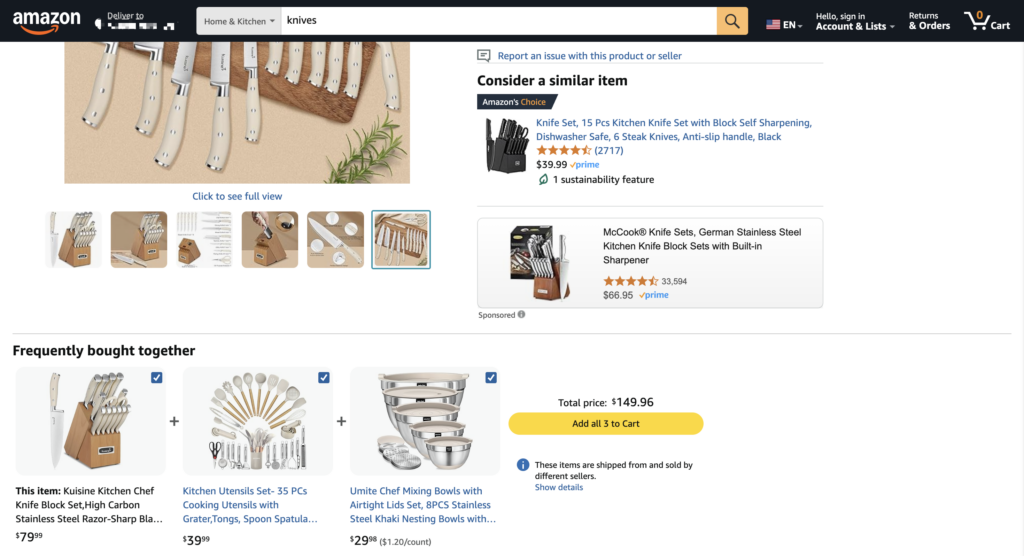
Meanwhile, if you’re selling chopping boards, it’s a novel idea to bundle them with mixing bowls. But looking at the frequently bought together section shows that it’s a common combination that shoppers purchase.
You should put yourself in the customer’s shoes and ask questions about the product’s purpose and how they’ll use it. Knowing your customer will help you come up with bundles that can’t be easily copied.
Select products that naturally complement each other and add value when bundled together. They must solve a real problem and not just earn you the Buy Box. Ensure that the bundle has a clear value proposition for customers.
When you nail the right product combination, customers will naturally see its benefits and purchase the bundle.
Determine the pricing strategy for your bundle, considering factors like the cost of goods, perceived value, and competitive pricing. Offer a discount compared to purchasing the items separately to incentivize bundle purchases.
Consider the costs of additional packaging, returns, shipping, and inventory. All of your costs must be accounted for, together with the discount you’d offer for the bundle. One useful strategy is to pair high-margin items with low-margin ones. This ensures that any extra costs don’t eat up your profits.
Continuously monitor the performance of your product bundles and gather feedback from customers. Use this data to make adjustments and improvements to your bundling strategy over time. If a bundle stops performing, consider replacing it and making a new one.
Just like individual items, you should continuously optimize the product listing of your bundle. Refine the title and description and use keywords to ensure they’re picked up in search. Even if you have a unique bundle, you’re still competing with multiple other product bundles.
Lead your bundle title with the highest-priced item, since customers perceive this as the most valuable item. Amazon recommends following this title formula:
It’s recommended to include the word “bundle” in the product title so customers know what they’re getting. However, not all sellers use this practice. Instead, they clearly outline the contents of the bundle in the product title.
For example, Blink doesn’t include the word “bundle” in the title, but it’s clear that customers are getting 4 outdoor Blink cameras plus a wired floodlight camera and a video doorbell.
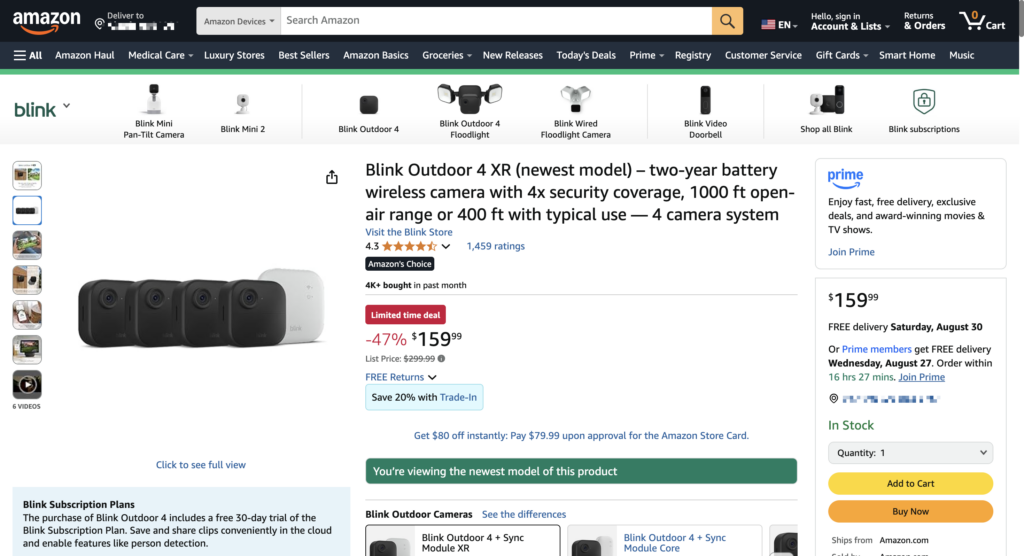
Give customers the complete contents of your bundles by enumerating the items in the product description. You should include complete details like model number, color, and size. Ensure the main image contains all the items in the bundle and not any representative pictures.
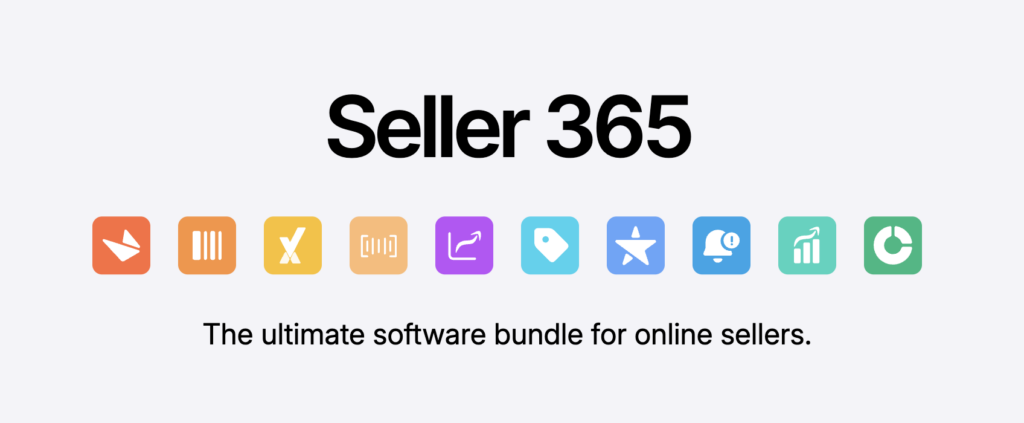
Running an Amazon store is easier with the right tools in place. For instance, you don’t have to manually look for profitable products that you can buy wholesale or retail for a nice profit. Tactical Arbitrage, one of the tools in the Seller 365 bundle, lets you find profitable wholesale deals and uses in-depth sales velocity analysis so you can easily source best-selling products.
You can also use a repricing tool like SmartRepricer to safely automate your Amazon pricing so you can always win the Buy Box on your products. Even if another seller attempts to copy your bundles, you can remain ahead by maintaining competitive pricing.
Product bundling isn’t rocket science, but it does require thought and strategy. The most successful Amazon sellers don’t just throw random products together. They carefully consider what combinations solve real customer problems or create genuine convenience.
And like we mentioned earlier, the right tools make all the difference in your bundling strategy. Seller 365 includes both Tactical Arbitrage and SmartRepricer, plus eight other essential Amazon seller tools in one comprehensive subscription. From managing your inventory with InventoryLab to tracking the performance of your bundles with FeedbackWhiz Profits—everything you need is in one place.
Try Seller 365 for free today and eliminate the technical headaches of managing your product bundles. Focus on building creative combinations while our tools handle the heavy lifting.